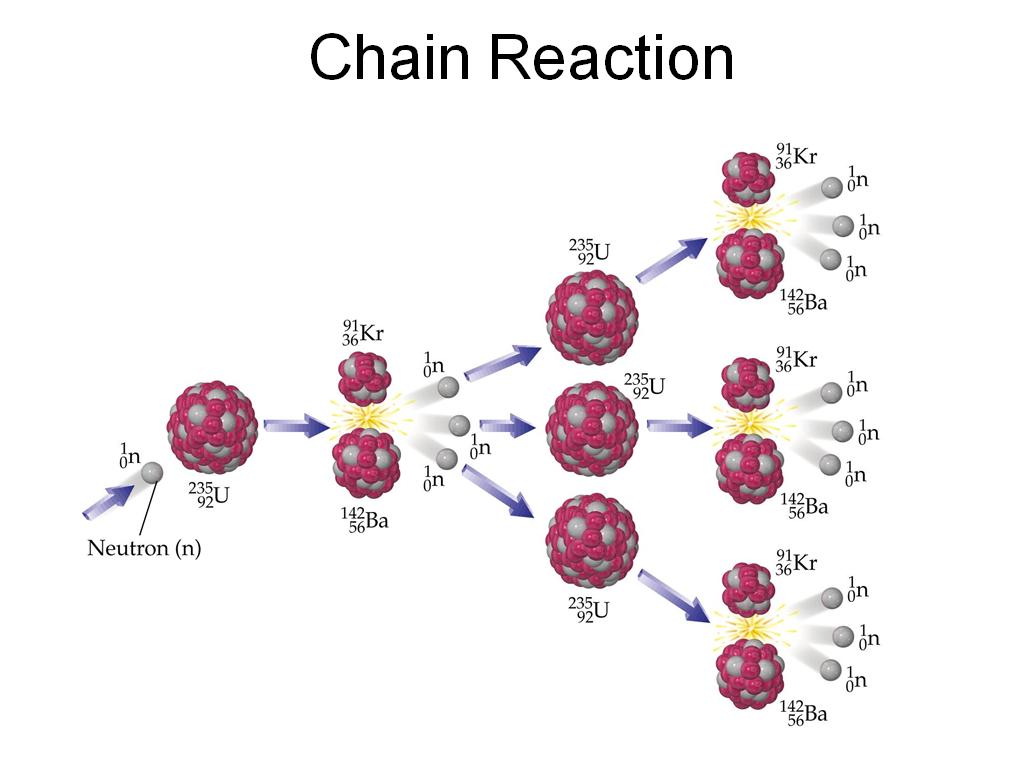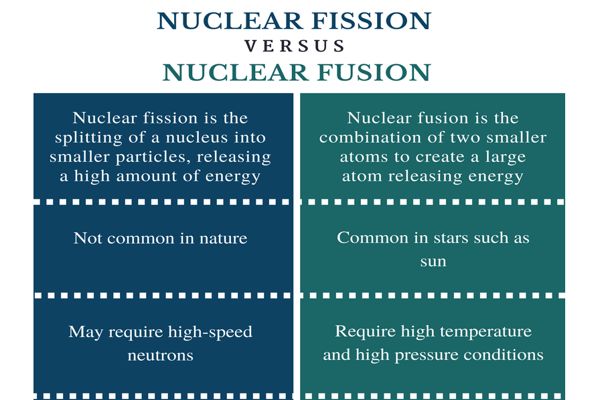

It is well known that the basic unit of matter such as atoms themselves consist of electrons, protons and neutrons. Use of Nuclear Fission and Nuclear Fusion We also discovered that the initial conditions and stabilising fields are extremely difficult to implement with our current technology, implying that Physics requires extremely advanced technology to carry out this extreme process. The fusion chain reaction, on the other hand, develops or occurs only under extreme pressure and temperature conditions that are kept stable by the energy released during the fusion process. This type of impact and scatter process is difficult to control/bear, but the initial conditions are relatively easy to achieve. Only when neutrons break unstable isotopes do fission chain reactions occur. A nuclear reaction of this type can have multiple splits of heavy isotopes such as Uranium 235U or the combining of light isotopes such as 2H and 3H). As a result, an ever-increasing cycle of reactions emerges, which can quickly become uncontrollable. Nuclear fission and nuclear fusion reactions are both chain reactions, which means that one nuclear event causes at least one other nuclear reaction, and the chain reaction typically continues. Furthermore, atoms attempt to become more stable by increasing their binding energy.

The greater the amount of binding energy held within the bonds, the more stable the atom. The binding energy is the total amount of energy held within the atomic bonds. What are Nuclear Fission and Nuclear Fusion in Physics?Ītoms are held together by two fundamental natural forces: weak and strong nuclear bonds. Hydrogen isotopes, Deuterium and Tritium are the primary fuels, which are used in fusion power plants experimentation Uranium is the significant fuel used in nuclear power plants primarily Nuclear fission has an application in nuclear power plantsįusion is the technology for experimentation that is used for the generation of energy One class nuclear weapon is the H2 bomb that uses a fission reaction to activate a fusion reaction

One class of nuclear weapons is a fission bomb to which we call an atomic bomb. The energy released in the process of fusion is 3-4 times higher than that of what is released by fission. The energy released by fission is a million times greater than that released in chemical reactions. It takes a little energy to split an atomĮxtremely high energy is required to bring two or more protons in close approach with each other It is necessary to have a critical mass of the substance with high-speed neutrons for a nuclear fission process to occurĪ higher density with an environment of high temperature is necessary for the process of nuclear fusion The process of fusion can be observed in stars such as the sunīy-products formed after the reaction takes placeĪ lot many highly radioactive particles are generated after fissionĪ very few radioactive particles are produced in the process of nuclear fusion, however, when the “trigger” fission is used then the formation of radioactive particles take place This cannot be observed in nature as fission does not occur naturally Nuclear fusion is the combination of two or lighter atoms to form a larger one Nuclear Fission refers to the splitting of one atom into two or more daughter atoms (lighter atoms)

The Distinction between Nuclear Fission and Nuclear Fusion in Tabular form: Consider two train bogies joining or fusing via a magnet. The nuclear fusion process is endothermic because it requires absorbing energy to fuse two atoms. The term 'nuclear fusion' refers to the process by which two or more atoms combine to form a larger atom. The term "fuse" refers to the joining of two or more objects. When the nuclear fission process breaks, a large amount of energy is released, indicating that the nuclear fission process is exothermic. These small atoms are technically light in their weight. In this context, nuclear fission refers to the breaking or splitting of a large or parent atom into smaller ones, or two or more daughter atoms. The term "fission" clearly denotes the splitting or breaking of something into smaller pieces. What is the Distinction between Nuclear Fission and Nuclear Fusion? Similarly, when a source of energy (light) splits into quanta or photons, this is referred to as the nuclear fission process. When two highly active atoms collide and fuse to form a larger atom due to the strong inter-atomic force of attraction, this is referred to as nuclear fusion. By considering the following scenario, we can distinguish between nuclear fission and nuclear fusion. The process of nuclear fusion is as opposed to that of nuclear fission.


 0 kommentar(er)
0 kommentar(er)
